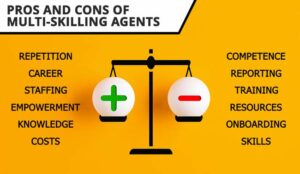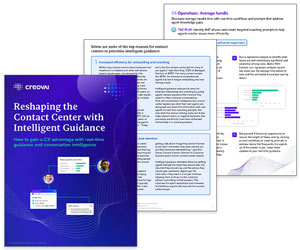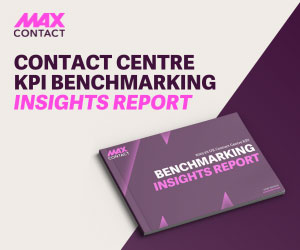Scheduling has always been a challenge, but with multiskilled agents now handling voice, chat, email, social, and more, it’s getting increasingly complex.
So how are today’s leading teams getting it right? And what data, tools, and strategies are helping them stay ahead of the curve?
To find out, we asked our panel of technology experts for their top tips on getting the very best results when scheduling multiskilled agents.
“Stop Assuming Every Issue Should Be Handled on Every Channel for Every Customer”

One of the biggest mistakes organizations make is assuming every issue should be handled on every channel for every customer. That “all things, everywhere” approach creates chaos.
Not only is it ineffective in resolving queries, it also doesn’t help you understand customer behaviours.
The smarter path is to first recognize the complexity and emotional weight of each customer interaction. Not every problem is suited for chat, just as not every routine task needs a phone call.
By mapping contact types to the channels best equipped to resolve them, you create clarity for both customers and agents.
From there, build your agents’ skills intentionally, ensuring you have the right mix of expertise for immediate channels like voice and chat, alongside deferred channels like email.
Contributed by: Florian Garnier, Product Marketing Manager, Calabrio
“Beware! Giving Agents Too Many Skills Without Sufficient Depth Can Lead to Burnout!”

Scheduling multiskilled agents can often feel like navigating a minefield! There are countless variables to consider. While it’s widely understood that multiskilled agents are essential to business success, it’s equally important to ensure they’re skilled to the right level.
Giving agents too many skills without sufficient depth can lead to inconsistent service delivery and burnout, ultimately impacting customer experience.
Managers can start by defining skill priorities to determine the optimal skill combination for each agent. Another useful approach is tiering the workforce into categories of expertise; managers can map out the strengths within their workforce and optimize agent scheduling to best meet business needs.
Alongside this, managers should focus on mastering the art of scheduling. Actions such as breaking down demand forecasts by skill to understand incoming contact volumes, or designing schedules to avoid coverage gaps, especially for critical roles, can ensure agents are scheduled effectively.
Contributed by: Shaunna Ruddick, Technical Consultant, Route 101
“Find Out Which Agents Are Most Efficient at Handling Different Channels or Topics”

Contact centres can use a combination of basic interaction metrics (volume, handle time) and QA automation to understand when to adjust staffing levels and which agents are most efficient at handling different channels or topics.
This can help you place agents when and where they are best suited, which helps reduce hold and handle times.
However, contact centres shouldn’t just focus on playing to their agents’ existing strengths. Instead, they should empower all agents to handle challenging interactions with the help of real-time guidance technology.
Contact centre leaders can use conversation analytics to identify the best customer interactions and use those transcripts to inform real-time prompts, bringing the knowledge and best practices of top performers to the entire frontline staff.
Not only does this improve service delivery, it also decreases scheduling complexity by giving all agents the skills to handle any interaction.
Contributed by: Simon Black, Chief Operating Officer, Creovai
“Avoid the Temptation to Create Highly Granular Skill Groups for Every Product, Language, and Channel”

Many planners give in to the temptation of creating highly granular skill groups for every product, language, and channel.
The problem? With this level of fragmentation, planning quickly becomes unmanageable and prone to errors.
Instead, planners should focus on the most critical skills and design around realistic scenarios. They should factor in practical elements like service levels, volume patterns, concurrent handling, and escalation rates, while also respecting the human side: agent strengths, availability, and preferences.
For example, keeping in consideration that someone great at chat may not be the best fit for video or phone.
Contributed by: Zainab Ahmed, Marketing Manager, Peopleware
“Remember Multiskilling Only Works When Agents Are Well Trained and Supported”

In multichannel environments, workload spikes are unpredictable. Multiskilling allows planners to redeploy agents where demand is highest, whether that’s chat on Monday or voice calls on Friday.
However, multiskilling only works when agents are well trained and supported. Especially when managing multiple systems and expectations across channels.
Through our awards process this year, we’ve seen a number of organizations showcase how it’s done, including:
- TSB delivered 4,000+ hours of training to make sure every multiskilled agent could perform across functions with confidence. This wasn’t just about ticking boxes. It was essential to sustaining performance and customer experience during high-pressure transformation.
- The Guinness Partnership trained 120 advisors and 11 managers in self-service tools and platform changes. So that new systems weren’t just adopted, they were actively used to increase speed and reduce handling times, even while roles were expanding.
Contributed by: Donna Whyman, Customer Operations Specialist, The Forum
“Put Control Directly Into Your Agents’ Hands to Meet Their Flexible Scheduling Needs”

Multiskilled scheduling is not just about managing more channels – it is about orchestrating a dynamic ecosystem where agents simultaneously juggle voice calls, live chats, social media responses, and emails, each with distinct service level requirements and interaction patterns.
Leading teams are cracking this code through innovations including:
- Real-time adaptive scheduling that balances complex factors like employee preferences, skill certifications, and compliance requirements. Rather than static weekly schedules, top performers leverage AI models that suggest optimal scheduling solutions as conditions change.
- Agent-centric mobile platforms that put schedule control directly into agents’ hands. This reduces friction and speeds approvals, with 68% of agents reporting unmet needs for flexible scheduling.
The persistent pitfall? Many organizations still treat multiskilled agents as interchangeable resources rather than recognizing that different skill combinations require unique scheduling approaches.
The most successful teams understand that an agent certified for technical support calls needs different scheduling logic than one overseeing general customer service across multiple channels.
Contributed by: Colin Whelan, Senior Director International Customer Success, Aspect
“Always Account for the Emotional Toll of Channel-Switching Too”

Scheduling for multiskilled agents isn’t just about plugging gaps – it’s about optimizing value. The best teams are leveraging AI-powered forecasting tools to match demand across channels in real time, while considering agent preferences, proficiency, and fatigue.
Skills-based routing and dynamic scheduling allow planners to shift resources throughout the day, boosting both performance and employee satisfaction.
But it gets even better with cross-functional collaboration. The best schedules are built when WFM teams work closely with operations, QA, and agents themselves.
It’s too easy to overload high performers, underutilize specialized skills, or fail to account for the emotional toll of channel-switching.
The most effective planners go beyond spreadsheets, using data, empathy, and feedback to design schedules that feel fair – and flex.
Contributed by: Tara Aldridge, Strategic Services Director, Vonage
“Don’t Forget That the Skills Agents Have and Need Are Constantly Changing”

One of the biggest mistakes that businesses make is forgetting that the skills agents have, and need, are constantly changing – but AI-based conversational analytics tools can help here, by analysing the skills your contact centre agents need, and have, for each channel.
From there, AI-based WEM tools can help you optimize every minute of an agent’s day, and with real-time adherence monitoring, your supervisors can take proactive action to ensure your teams are staffed, and skilled, correctly for the ever-changing contact volumes.
Contributed by: Matthew Clare, VP, Product Marketing, UJET
“Planners Must Work Closely With Operational Teams to Find the Optimal Channel Mix for Customers”

Strategic service delivery in multichannel centres means elevated focus on blending WFM data, real-time performance, and CCaaS capabilities to understand and align the right colleagues to the right channels.
Omnichannel platforms make this process easier, compared to separate systems handling different media types.
Planners must also work closely with operational teams to understand service delivery to help find the optimal channel mix for customers, boosting productivity without compromising quality.
Planners also need to factor in individual agents’ strengths and proficiencies, as not every agent is suited to every media. Co-pilot style AI assistants can bridge these gaps, guiding agents in real time, providing context, and supporting less-familiar tasks to improve confidence and consistency.
(Note, a common mistake can be treating waiting time between interactions as wasted – but these gaps protect readiness to meet SLAs.)
Contributed by: Lewis Gallagher, Senior Solutions Consultant, Netcall
“Limit Agents to a Maximum of Two Interaction Types at a Time”

If an agent has to chop and change the channels they are responsible for, this reduces their efficiency – especially when going from a spoken channel to a written channel and vice versa.
Workload is the number-one source of job dissatisfaction and churn. If agents think they are too busy juggling multiple written and spoken inbound and outbound channels, that ‘great customer welcome’ could turn into the role of being the agents’ doormat.
To account for this, shifts should be structured to limit agents to a maximum of two interaction types at a time, with exceptions only for exceptional demand. Agent assist technologies can also help by surfacing next-best actions during interactions with customers to reduce mental load.
Contributed by: Martin Taylor, Co-Founder and Deputy CEO, Content Guru
“It’s About Knowing What’s Best for YOUR Agents and Customers”

Overall, success comes from understanding the right concurrency and channel mix for your teams.
I’ve heard of some contact centres with agents happily answering four to five live chats concurrently, whilst others expect just two. I’ve even spoken to someone who only asked their agents to handle one chat at a time because of the complexity of the queries coming in.
It’s about understanding your agents as individuals too, as some may be comfortable handling three live chats with emails coming through in the background, whilst others would find this same combination too overwhelming to be effective in their role.
No one wins if you’re putting your agents under too much pressure, so don’t make assumptions. Experiment with what works best and then stick with it. If you push your luck, everything could just implode and create a lose–lose situation for agents and customers alike.
Contributed by: Paul Gardner, Resource Planning Manager at Haier Europe
Where Have You Seen Your Best Successes When Scheduling Multiskilled Agents?
Click here to join our NEW Readers Panel to share your experiences and feature in future Call Centre Helper articles.
For more great insights and advice from our panel of experts, read these articles next:
- What’s Next for Voice of the Customer (VoC)?
- Where Do WFM Systems Have the Biggest Impact?
- 10 New Ways Tech Is Helping Agents Right Now
Author: Megan Jones
Published On: 22nd Sep 2025 - Last modified: 6th Jan 2026
Read more about - Call Centre Management, Aspect, Calabrio, Colin Whelan, Content Guru, Creovai, Customer Service, Donna Whyman, Employee Engagement, Employee Experience (EX), Florian Garnier, Lewis Gallagher, Martin Taylor, Matthew Clare, Multi-Skilling, Netcall, Paul Gardner, Peopleware, Route 101, Scheduling, Shaunna Ruddick, Simon Black, Tara Aldridge, The Forum, Top Story, UJET, Vonage, Workforce Management (WFM), Workforce Planning, Zainab Ahmed










































